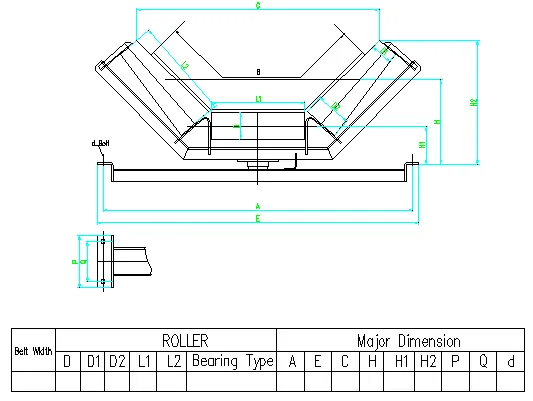 Afrikaans
Afrikaans  Albanian
Albanian  Amharic
Amharic  Arabic
Arabic  Armenian
Armenian  Azerbaijani
Azerbaijani  Basque
Basque  Belarusian
Belarusian  Bengali
Bengali  Bosnian
Bosnian  Bulgarian
Bulgarian  Catalan
Catalan  Cebuano
Cebuano  Corsican
Corsican  Croatian
Croatian  Czech
Czech  Danish
Danish  Dutch
Dutch  English
English  Esperanto
Esperanto  Estonian
Estonian  Finnish
Finnish  French
French  Frisian
Frisian  Galician
Galician  Georgian
Georgian  German
German  Greek
Greek  Gujarati
Gujarati  Haitian Creole
Haitian Creole  hausa
hausa  hawaiian
hawaiian  Hebrew
Hebrew  Hindi
Hindi  Miao
Miao  Hungarian
Hungarian  Icelandic
Icelandic  igbo
igbo  Indonesian
Indonesian  irish
irish  Italian
Italian  Japanese
Japanese  Javanese
Javanese  Kannada
Kannada  kazakh
kazakh  Khmer
Khmer  Rwandese
Rwandese  Korean
Korean  Kurdish
Kurdish  Kyrgyz
Kyrgyz  Lao
Lao  Latin
Latin  Latvian
Latvian  Lithuanian
Lithuanian  Luxembourgish
Luxembourgish  Macedonian
Macedonian  Malgashi
Malgashi  Malay
Malay  Malayalam
Malayalam  Maltese
Maltese  Maori
Maori  Marathi
Marathi  Mongolian
Mongolian  Myanmar
Myanmar  Nepali
Nepali  Norwegian
Norwegian  Norwegian
Norwegian  Occitan
Occitan  Pashto
Pashto  Persian
Persian  Polish
Polish  Portuguese
Portuguese  Punjabi
Punjabi  Romanian
Romanian  Russian
Russian  Samoan
Samoan  Scottish Gaelic
Scottish Gaelic  Serbian
Serbian  Sesotho
Sesotho  Shona
Shona  Sindhi
Sindhi  Sinhala
Sinhala  Slovak
Slovak  Slovenian
Slovenian  Somali
Somali  Spanish
Spanish  Sundanese
Sundanese  Swahili
Swahili  Swedish
Swedish  Tagalog
Tagalog  Tajik
Tajik  Tamil
Tamil  Tatar
Tatar  Telugu
Telugu  Thai
Thai  Turkish
Turkish  Turkmen
Turkmen  Ukrainian
Ukrainian  Urdu
Urdu  Uighur
Uighur  Uzbek
Uzbek  Vietnamese
Vietnamese  Welsh
Welsh  Bantu
Bantu  Yiddish
Yiddish  Yoruba
Yoruba  Zulu
Zulu Impact Idlers for Belt Conveyors Enhancing Performance and Reducing Wear
Understanding Belt Conveyor Impact Idlers Key Components for Efficient Material Handling
Belt conveyors are an indispensable part of modern material handling systems, widely used in industries ranging from mining to manufacturing. As they transport bulk materials over varying distances, the components that make up the system play a crucial role in ensuring efficient and reliable operation. Among these components, the impact idler stands out as a vital element, specifically designed to absorb the impact of falling materials and provide support to the conveyor belt.
What is an Impact Idler?
An impact idler is a type of roller designed for use in belt conveyors. Its primary function is to support the belt and absorb shock at points where materials are loaded onto the conveyor. Located directly under the loading area, impact idlers are engineered to withstand the considerable forces exerted by heavy loads, thus preventing damage to the conveyor belt and enhancing the longevity of the system.
Design and Construction
Impact idlers are typically constructed from robust materials such as steel, ensuring durability and strength. They can be equipped with various types of bearings to reduce friction and wear, which is critical in minimizing energy consumption during operation. Additionally, the design may include a rubber or plastic lining, which further helps absorb shock and reduce noise.
The idlers are mounted on a frame that is adjustable, allowing operators to modify the height and angle to ensure optimal alignment with the conveyor belt. This feature is essential, as proper alignment prevents undue strain on the belt and other components, ultimately leading to lower maintenance costs and reduced downtime.
Importance of Impact Idlers
1. Protection Against Damage The most significant advantage of impact idlers is their ability to absorb the energy from falling materials, significantly reducing the risk of damage to the belt. A damaged belt can lead to costly repairs and operational delays, making impact idlers instrumental in maintaining the integrity of the conveyor system.
belt conveyor impact idler

2. Enhanced Load Distribution Impact idlers help distribute the load more evenly across the conveyor belt. This even distribution minimizes stress points and allows for smoother material flow, improving overall efficiency.
3. Reduced Maintenance By preventing belt damage and supporting even load distribution, impact idlers contribute to lower maintenance needs. This reduction in maintenance not only saves time but also conserves resources, making conveyor systems more profitable in the long run.
4. Improved Safety The use of impact idlers enhances safety in the workplace. By minimizing the risk of belt failure and subsequent accidents, they contribute to an overall safer working environment for operators and personnel.
Applications
Impact idlers find applications across various industries. In mining, they are critical for transporting raw materials, where heavy loads are dumped onto the conveyor at high speeds. In manufacturing, these idlers help convey products and components efficiently along the production line. Moreover, they are also used in agriculture for grain handling and in logistics for material transfer.
Conclusion
The impact idler is a crucial component of belt conveyor systems, playing a significant role in ensuring optimal performance and reliability. Its ability to absorb shock, protect the conveyor belt, and reduce maintenance requirements underscores its importance in various industries. As technology advances, the design and construction of impact idlers continue to evolve, incorporating innovative materials and engineering techniques that further enhance their effectiveness.
As businesses seek to improve efficiency and reduce operational costs, understanding and utilizing the right components, such as impact idlers, becomes increasingly important. These idlers not only enhance the functionality of belt conveyors but also contribute to a safer and more productive work environment.
-
Revolutionizing Conveyor Reliability with Advanced Rubber Lagging PulleysNewsJul.22,2025
-
Powering Precision and Durability with Expert Manufacturers of Conveyor ComponentsNewsJul.22,2025
-
Optimizing Conveyor Systems with Advanced Conveyor AccessoriesNewsJul.22,2025
-
Maximize Conveyor Efficiency with Quality Conveyor Idler PulleysNewsJul.22,2025
-
Future-Proof Your Conveyor System with High-Performance Polyurethane RollerNewsJul.22,2025
-
Driving Efficiency Forward with Quality Idlers and RollersNewsJul.22,2025





























